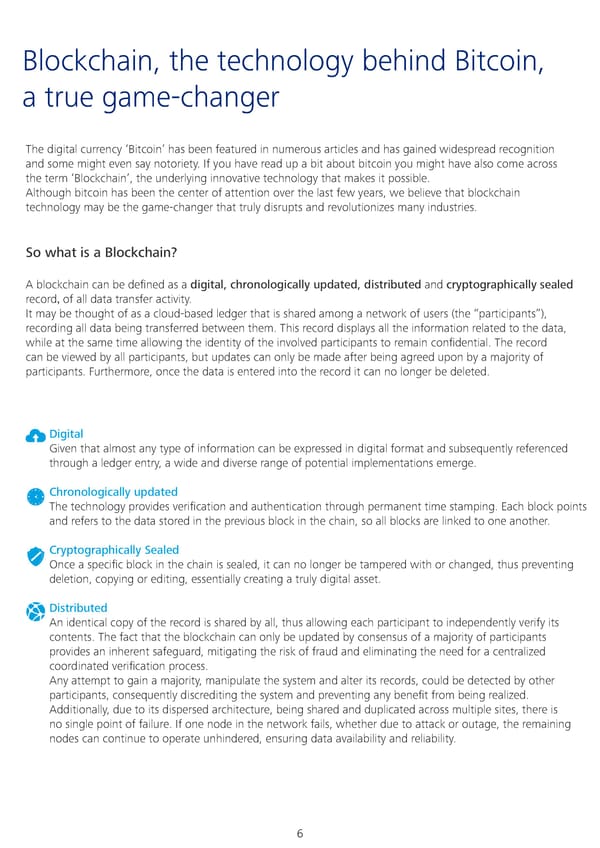Blockchain, the technology behind Bitcoin, a true game-changer The digital currency ‘Bitcoin’ has been featured in numerous articles and has gained widespread recognition and some might even say notoriety. If you have read up a bit about bitcoin you might have also come across the term ‘Blockchain’, the underlying innovative technology that makes it possible. Although bitcoin has been the center of attention over the last few years, we believe that blockchain technology may be the game-changer that truly disrupts and revolutionizes many industries. So what is a Blockchain? A blockchain can be defined as a digital, chronologically updated, distributed and cryptographically sealed record, of all data transfer activity. It may be thought of as a cloud-based ledger that is shared among a network of users (the “participants”), recording all data being transferred between them. This record displays all the information related to the data, while at the same time allowing the identity of the involved participants to remain confidential. The record can be viewed by all participants, but updates can only be made after being agreed upon by a majority of participants. Furthermore, once the data is entered into the record it can no longer be deleted. Digital Given that almost any type of information can be expressed in digital format and subsequently referenced through a ledger entry, a wide and diverse range of potential implementations emerge. Chronologically updated The technology provides verification and authentication through permanent time stamping. Each block points and refers to the data stored in the previous block in the chain, so all blocks are linked to one another. Cryptographically Sealed Once a specific block in the chain is sealed, it can no longer be tampered with or changed, thus preventing deletion, copying or editing, essentially creating a truly digital asset. Distributed An identical copy of the record is shared by all, thus allowing each participant to independently verify its contents. The fact that the blockchain can only be updated by consensus of a majority of participants provides an inherent safeguard, mitigating the risk of fraud and eliminating the need for a centralized coordinated verification process. Any attempt to gain a majority, manipulate the system and alter its records, could be detected by other participants, consequently discrediting the system and preventing any benefit from being realized. Additionally, due to its dispersed architecture, being shared and duplicated across multiple sites, there is no single point of failure. If one node in the network fails, whether due to attack or outage, the remaining nodes can continue to operate unhindered, ensuring data availability and reliability. 6
 Israel: A Hotspot for Blockchain Innovation Page 6 Page 8
Israel: A Hotspot for Blockchain Innovation Page 6 Page 8